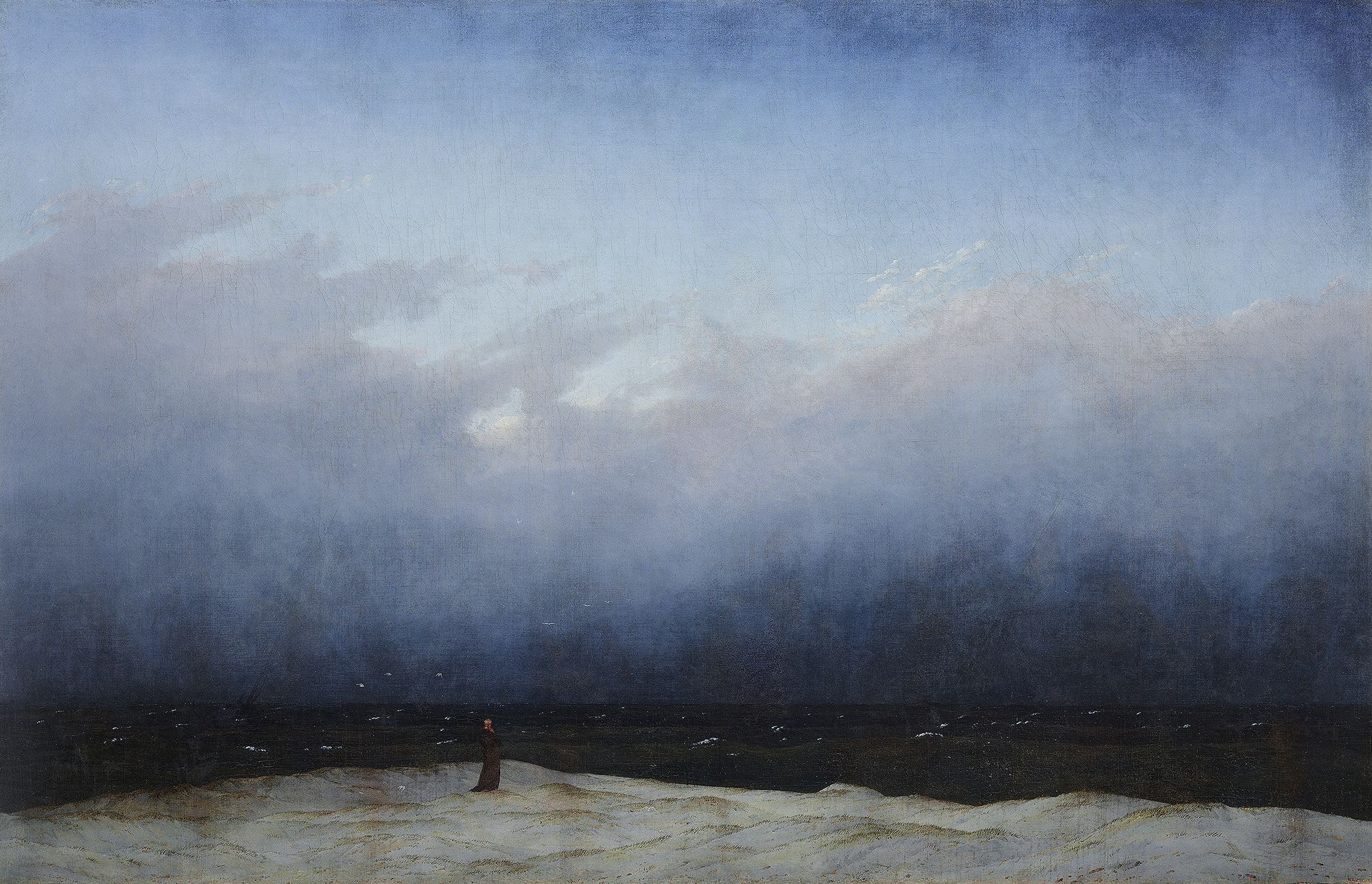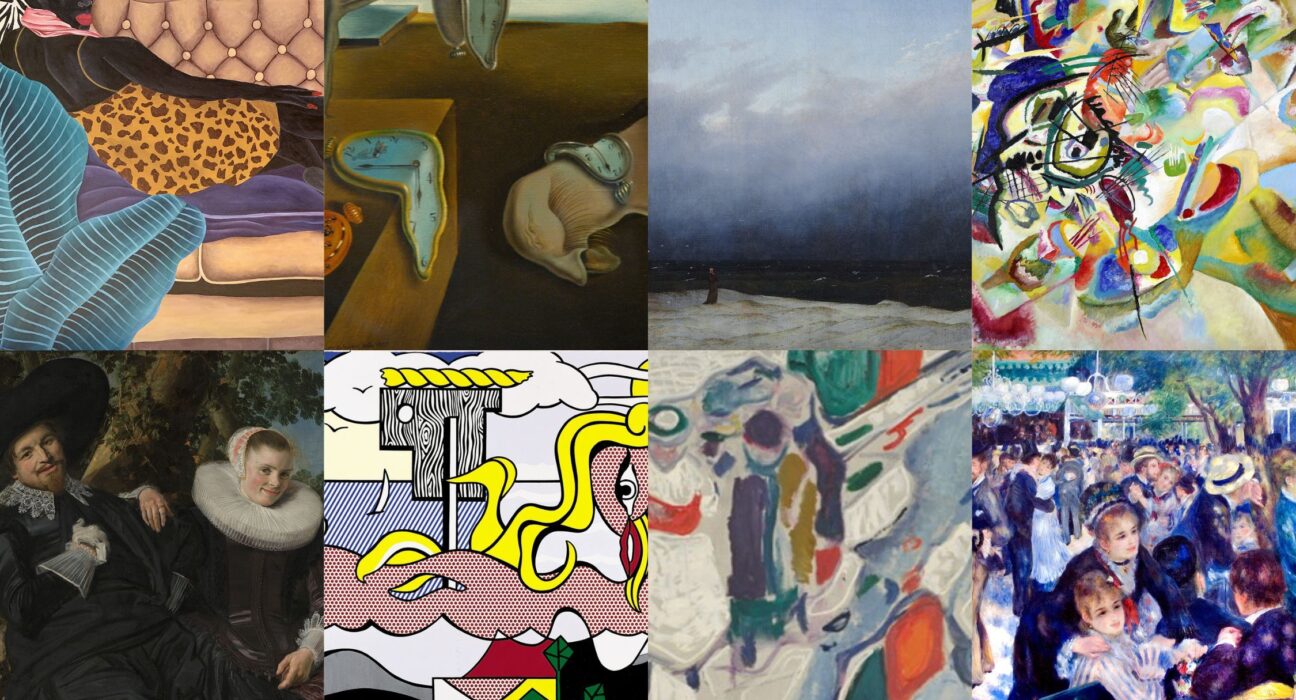Caspar David Friedrich: Art for a New Age, Hamburger Kunsthalle, Hamburg

Der Mönch am Meer (The Monk by the Sea) 1808–1810, Caspar David Friedrich (bpk/Nationalgalerie, SMB/Andreas Kilger)
This year will celebrate what would be the 250th birthday of one of Germany’s most influential painters, Casper David Friedrich. Many exhibitions dedicated to the artist will take place across the country, including in Dresden where he spent 40 years of his life, but one of the most comprehensive shows is taking place at the Hamburger Kunsthalle. Here, more than 60 paintings will showcase some of the most iconic work by the foremost artist of German Romanticism. The exhibition will mostly look at how Friedrich broke new ground in the landscape genre, with a separate section examining more of his contemporary work.
Frans Hals, Rijksmuseum, Amsterdam
Frans Hals, Portrait of a Couple, probably Isaac Abrahamsz Massa and Beatrix van der Laen, about 1622 (Rijksmuseum, Amsterdam)
In 2024, Fran Hals’ famous The Laughing Cavalier (1624) will return to the Netherlands for the first time in 150 years. It will be part of a new exhibition dedicated to the Dutch master’s work at Amsterdam’s Rijksmuseum. More than 50 of his greatest paintings have been retrieved from international collections, with the show’s focus being on his 17th-century portraits of figures such as families, lovers and soldiers. Hals represents Dutch Golden Age artists, and is best known for his bold brushstrokes, expressive faces, and for playing a pivotal role in the evolution of group portraiture. This presentation of his Hals’ work follows Rijksmuseum’s highly popular Vermeer exhibition, hoping to achieve the same success.
IMAGINE! 100 Years of International Surrealism, The Royal Museums of Fine Arts, Brussels
To celebrate 100 years of Surrealism, a special international touring exhibition has been curated, stopping off in Belgium, France, Germany, Spain and eventually overseas to Pennsylvania. With each destination comes a unique focus that demonstrates the heritage of that particular place. For example, IMAGINE! will begin its stint in Brussels with a perspective on symbolism, a type of art that rapidly developed in Brussels. More than 130 artworks, including paintings, sculptures and photographs, will be displayed in The Royal Museums of Fine Arts. The show will look at the similarities of surrealism and symbolism, as found in works by Léon Spilliaert, Félicien Rops and Fernand Khnopff.
Roy Lichtenstein: A Centennial Exhibition, Albertina Museum, Vienna
Roy Lichtenstein Figures in Landscape, 1977 (Estate of Roy Lichtenstein/Bildrecht, Vienna 2023)
Roy Lichtenstein was one of the most influential artists of the 20th century and a key figure in the Pop Art movement. His instantly recognisable work often depicted stereotypical blondes, war heroes and comic book figures, with a cartoon-like aesthetic. To celebrate what would have been the artist’s 100th birthday year, Vienna’s Albertina Museum is hosting a major retrospective of his work. Many significant pieces from the 1960s have been chosen as part of this temporary hanging, including the Drowning Girl (1963), on loan from New York’s MoMA. But beyond the groundbreaking early years, Lichtenstein’s lesser-known late work will also be showing, including his sculptures and pieces using enamel techniques.
Paris 1984: Inventing Impressionism, Musée d’Orsay, Paris
Paris’s Musée d’Orsay is marking 150 years since Impressionism was born. In April 1984, 31 ‘outcast’ artists came together to present the first ever Impressionist exhibition in Paris, a style of art that went against traditional techniques. Among those artists were names such as Renoir, Monet, Pissarro, Cezanne and Degas, all known as pioneering figures in the art movement. This exhibition will showcase more than 130 artworks, as well as new research, retelling the story of the monumental day which changed the course of art history forever. It will also explore what happened to the lesser-known artists who participated in the original exhibition.
Expressionists: Kandinsky, Münter and the Blue Rider, Tate Modern, London
Exhibition dates: 25 April-20 October 2024, tate.org.uk
In the early 20th century, several close friends and collaborators came together to form a union of German Expressionists: they become known as The Blue Rider. It was founded by Wassily Kandinsky and Franz Marc in the early 20th century, with the sole purpose to alter the direction of modern art. This exhibition at London’s Tate Modern will display more than 130 works, many of which have been donated by Lenbachhaus in Munich, taking particular care to highlight the group members’ unique artistic approaches, such as Marc Franz use of colour for symbolism, and Gabriele Münter’s experiential photographs.
Edvard Munch: Horizons, Munch Museum, Oslo
Edvard Munch, Children in the Street (@Munchmuseet)
During Norwegian painter Edvard Munch life and career, a significant shift was taking place in the world of modern art. More artists were experimenting with how they represent the world, human life and our inner feelings. Images became increasingly abstract, different forms took shape, and unnatural colours became much more prominent. In this new exhibition, taking over the 11th floor of the Munch Museum, visitors can explore the range of expressive paintings created by European artists from 1880 to 1950, including pieces by Munch himself, and renowned artists such as Emil Nolde, Oscar Kokoschka and Gabriele Münter.
When We See Us: A Century of Black Figuration in Painting, Kunstmuseum Basel
When We See Us: A Century of Black Figuration in Painting, Kunstmuseum Basel (Courtesy of the Maduna Collection, © Zandile Tshabalala Studio)
Originally on show at Cape Town’s Zeitz MOCAA, this critically acclaimed collection is making its way to Switzerland for a five-month stint at Kunstmuseum Basel. With more than 200 artworks by Black artists created in the past century, the exhibit represents the experiences of people from African and its diaspora. More than 150 artists will be showcased, including Lynette Yiadom-Boakye, Zandile Tshabalala and Jacob Lawrence. It has been slightly updated for its move, with the artworks grouped into five distinct themes: the everyday; joy and revelry; repose; sensuality; and triumph and emancipation. The exhibition was inspired by the 2019 Netflix series When They See Us, with the title’s change from ‘us’ to ‘we’ providing a crucial switch in perspective.

